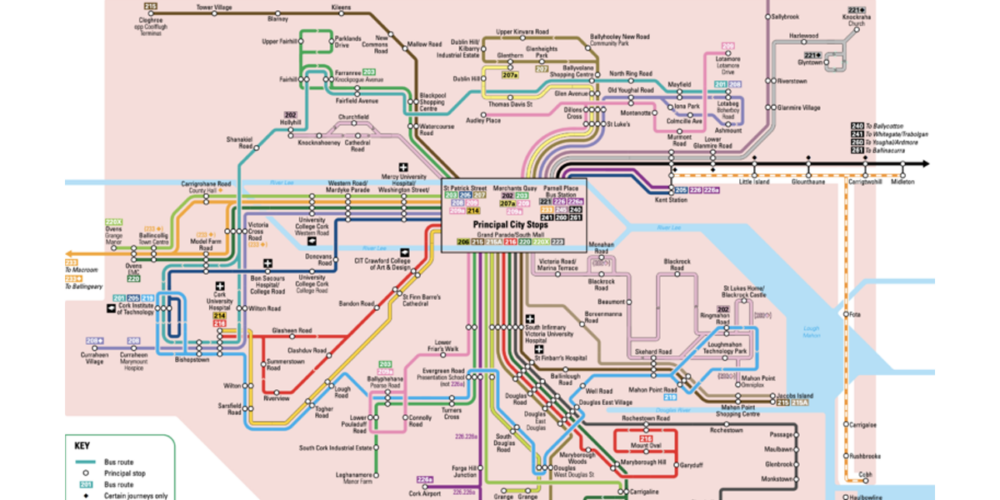The draft All-Ireland Strategic Rail Review is an excellent start to the changes that must be implemented if we are to reach our emissions targets and seriously tackle climate change.
The review can only be published in draft form, as the Stormont Assembly is not sitting, and it will be held up until the relevant minister there agrees to it. It must be implemented in full, expanded on, and in a shorter time frame.
Can we afford it?
The cost would be €36 billion, shared between the Irish state (€27 billion) and the North (€9 billion). There is an additional €45 billion in “unexpected” corporation tax due to be collected over the next three years; so there are no excuses.
The question is, Can we afford not to do it
As this review was being published, wildfires, floods and other extreme weather conditions raged around the world. Not acting on climate change now is not an option, and would be very expensive indeed.
Can it be done?
Forty years ago the plan to build motorways seemed ambitious, and many people thought they were a fantasy. The Government gave priority to the needs of business, to get their merchandise transported quickly and efficiently around. Road transport was considered the best option. Little thought was given to the damage to the environment, or the effect of this policy on the climate. Business was the Government’s only concern.
The Sustainable Energy Authority of Ireland states that transport is by far the largest source of energy-related carbon dioxide emissions in Ireland. Before the covid-19 pandemic it was responsible for more than 40 per cent of energy-related CO₂ emissions in 2019.
By the middle of 2021, transport activity and energy use had mostly returned to pre-pandemic levels. Transport accounted for 34 per cent of energy-related CO₂ emissions in 2021. If we are to reduce those emissions we must get people onto public transport and goods out of trucks and onto freight trains.
The priority now must be the citizens and the environment. €29 billion is a small price compared with the €64 billion spent on private banking debt. This will benefit the whole of society, and the planet, not just elite bankers. The country has a legal requirement to cut emissions by half by 2030 and to be carbon-neutral by 2050. This review can be the starting-point to build on, to reach our targets, and needs to be completed and expanded well before 2050.
Implementation involves three periods: short-term interventions to be completed by 2030, medium-term interventions between 2030 and 2040, and long-term interventions between 2040 and 2050. This is not soon enough. There is no reason to delay completion to 2050; it could and should be completed in half that time. We have no choice: these are forced, necessary changes to reach our required legal commitments and to avert climate disaster.
It is an achievable goal. Ireland has 2,300 km of railway lines. The review recommends increasing this to 2,950 km, and electrifying 80 per cent of it. Indian Railways electrified 30,446 km of track in the last eight years, up from 3,874 km between 2007 and 2014. Up to March 2022 India had electrified 52,247 km, which was approximately 80 per cent of its total network of 65,141 km, and is on target to complete the electrification process by December 2023. This demonstrates how achievable the task is.
The review also considered whether developing a new, fully segregated 300 km/h high-speed railway network could be a viable option for Ireland. Analysis undertaken for the review found that the benefits of this would be significantly outweighed by the costs. But the benefits should not be measured in monetary terms but in social well-being and the environmental and time-saving benefits it will provide to the people. Speed and interconnectivity will be the key to getting people out of cars, and goods out of lorries.
Some of the benefits of the proposals
- The railway network will be decarbonised, including an electrified intercity network as well as hybrid (hydrogen and electric) rolling-stock.
- 700,000 more people will live within 5 km of a railway station.
- Journey times will be halved. The core intercity network (Dublin, Belfast, Cork, Limerick, Galway, and Waterford) will be upgraded to allow top speeds of at least 200 km/h and up to 300 km/h, ensuring that train journeys are much faster than car.
- Speeds on regional and rural lines will be increased to at least 120 km/h.
- The Western Rail Corridor between Claremorris and Athenry will be reinstated.
- The railway will be extended from Portadown to Dungannon, Omagh, Strabane, Derry, and on to Donegal and Letterkenny.
- The South Wexford Railway will be reinstated, connecting to Waterford.
- The railway will be developed to boost connectivity in the north midlands, from Mullingar to Cavan, Monaghan, Armagh, and Portadown.
- Services on the busiest intercity routes will run every 30 minutes.
- Passenger capacity will be doubled.
- Dublin, Belfast and Shannon Airports will be connected to the railway, thus connecting 90 per cent of air passengers by railway to an airport.
- Connectivity to the country’s busiest ports will be strengthened, and track access charges for freight will be reduced.
This will be a transformational benefit to the people, and should be the minimum in expectations for transport in 21st-century Ireland. It’s time to make diesel history and publicly owned Iarnród Éireann the backbone of frequent, fast, efficient, sustainable, interconnected and affordable public transport.






